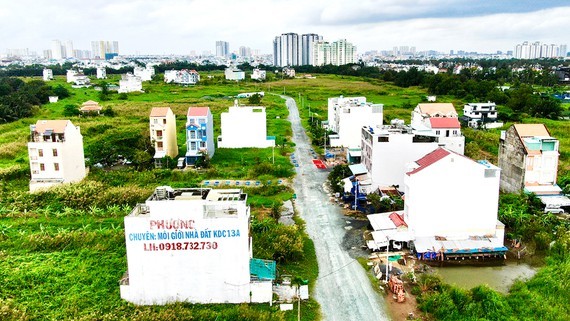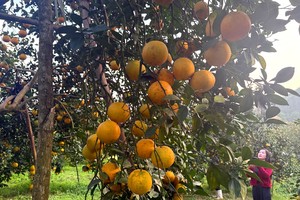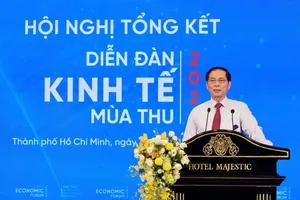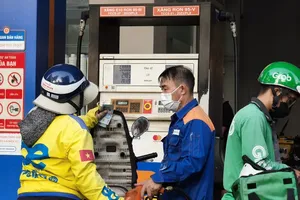
It is not hard at all to find in Hoc Mon District, Cu Chi District, and Thu Duc City a huge vacant lot surrounded by wired fence. Local people near those lots informed that the land owners mostly live in the inner city and buying these parcels is their investment method.
Statistics from the HCMC Department of Natural Resources and Environment reveal that there is an increase at the rate of over 1,100ha a year in the surface area of agricultural land in suburban districts changing to non-agricultural purposes or leaving unused. Noticeably, in the districts of Cu Chi, Hoc Mon, Binh Chanh, more than 3,000ha of agricultural land either belongs to suspended projects or is left abandoned by owners, or even severely polluted by industrial waste.
This is the result of ineffective management of manufacturing plants causing environmental pollution in the inner city 20 years ago. They should been given a chance to upgrade their production lines and waste treatment instead of a simple relocation to outskirt areas. To amend the situation, functional agencies in HCMC is inspecting and punishing any business creating pollution to the environment, especially rivers and channels.
The HCMC Department of Natural Resources and Environment reported that in HCMC, there are hundreds of new urban areas without or with so few residents. Such examples are Khang An residential area with 350 villas and urban houses in Phu Huu Ward or the vacant Dong Tang Long urban area in Truong Thanh Ward of Thu Duc City.
Another pitiful case is the 13A residential area in the Southern new urban area with the surface area of 378,000m². The construction project started 15 years ago in hope of becoming a modern residential area full of facilities like department stores, parks, playgrounds. At that time, the parcels of the project had a price of VND40-50 million (US$1,800) per square meter. At present, however, only a few houses are completed. Other lots are left vacant, and weeds are as high as 2 meters.
The reason for this downgrading state is the lack of necessary residential infrastructure. In addition, many land owners just buy the lots as an investment method to earn profit. That has partially contributed to the land waste and affected the overall architectural beauty.
Besides the low accommodation need of land buyers, tardiness in land compensation and recovery task plays a negative role in project suspension. Among the 75 projects under the responsibility of the HCMC Management Board for Traffic Infrastructure Investment and Construction, 57 cannot proceed due to this reason.
This tardiness also causes a rise in overhead cost, some even a double, like the expansion project for Hanoi Highway or the construction project of leftover parts of Ring Road No.2. This creates loss for both contractors as well as the State since socio-economic activities related to these facilities cannot be done and residents in these areas cannot enjoy a stable life.
In 2020, the Prime Minister issued Resolution No.27 to allow HCMC to pilot special mechanisms and procedures to shorten the time of land compensation and to offer resettlement support. That legal document was expected to address the land recovery problem, yet it was not enough. Experts in the field stated that the Government should review construction and planning laws as well.
Being planned as a public facility, the land of many people cannot be transformed into other useful purposes or constructed. The localities could not invest in those lots either, which makes the land value lower than the market price and unfairness to land owners. Therefore, they refuse the compensation price, and the land recovery task cannot be completed.
Once the task is prolonged for maybe many years, this land compensation price gradually becomes outdated. Obviously, it is impossible for land owners to agree with that price, even though the compensation price for buildings on the land is satisfactory.
To address the situation, Vice Chairman of HCMC People’s Committee Le Hoa Binh signed Decision No.539/QD-UBND along with the key project ‘Land Management and Methods to Effectively Use Land in HCMC’.
Accordingly, HCMC People’s Committee proposes these solutions of
_computerizing the calculation of land price to ensure objectiveness, starting with the selection of standard parcels which are annually priced to develop a land value map;
_deciding the rate not subjectively by the authorities
_using the majority consensus method among resettled residents to on-site resettlement measures in the case of building new or expanding current streets by acquiring neighboring land
_valuating land immediately when investment projects are approved and refusing land price increase to calculate compensation or support value since the project starts
























